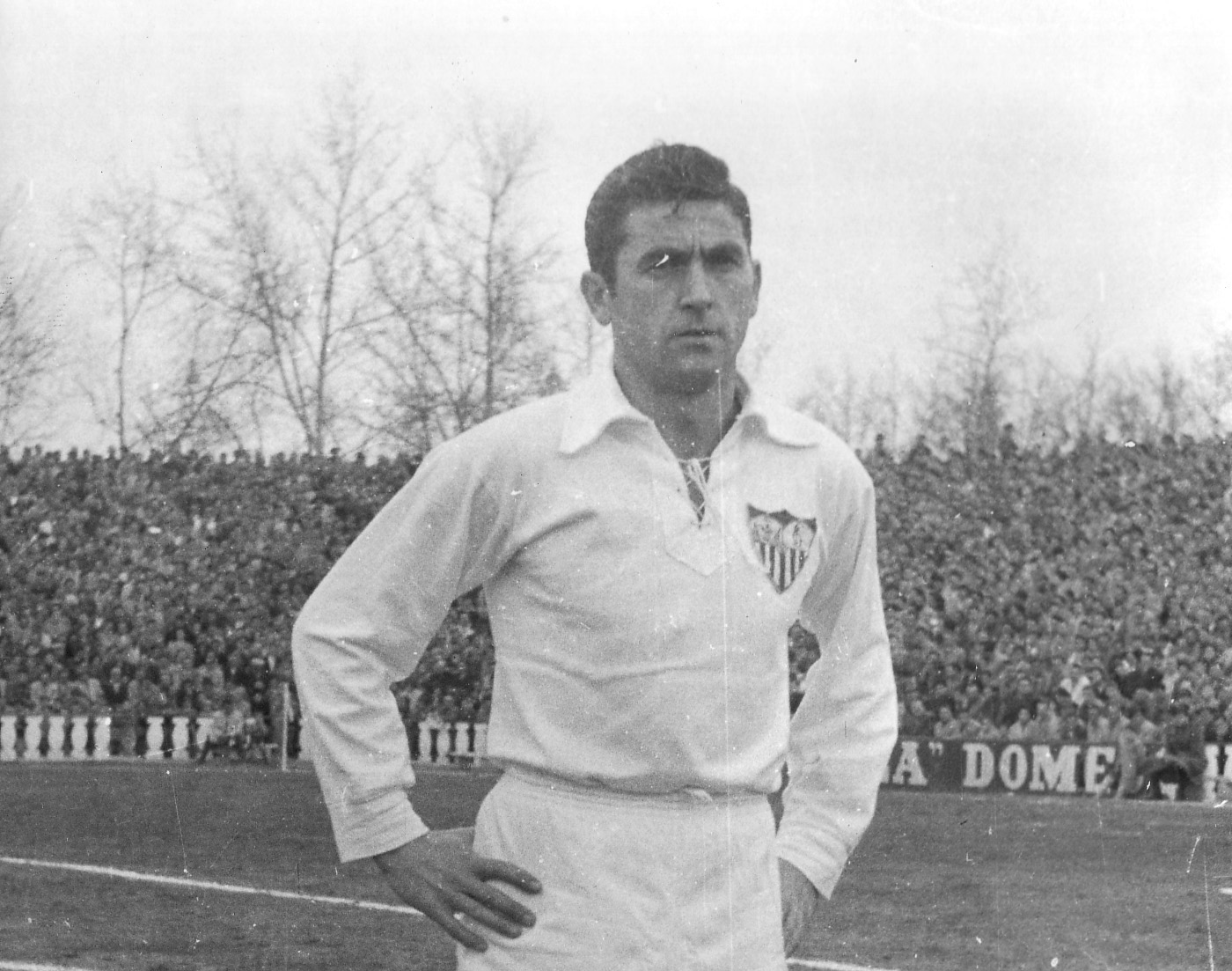Messi, Raúl, Gento, Zarra... all of these names have something in common. They have been the greats of the La Liga championship. But amongst them appears a Sevilla player, Juan Arza. A study carried out by the 'Centro de Investigaciones de Historia y Estadística del Fútbol Español' (centre of investigations of the history and statistics of Spanish football) has placed the Sevilla legend as the sixth greatest player in the Spanish league's history,
The order of the selected players in this ranking begins with Messi, followed by Raúl, César, Zarra, Quini, then Arza, Di Stéfano, Gento, Santillana and Gorostiza.
Among other facts, Juan Arza played in 414 matches for Sevilla, scoring 202 goals and was also the only player to receive the Pichichi Trophy while wearing the Sevilla shirt in the club's history, scoring 28 goals in 29 games. In terms of trophies, he won the league in 46 and the cup in 48 and was a league runner-up on two occasions.
From his arrival at Sevilla, Arza went on to do everything for the club, working in many positions: player, coach, representative, member of the 'Comisión Deportiva del Sevilla Atlético y Cantera' (the youth and B-team setup), director and Sevilla FC president of honour.
Arza went on to do everything at Sevilla, as a player, coach, representative, member of sports commissions, director and president of honour
He began his career playing at Izarra, his hometown team. After brief spells at Deportivo Alavés and CD Málaga, he signed for Sevilla FC in 1943. The fee at the time was the highest paid in the club's history at that time, costing 90,000 pesetas, the playing of several friendly matches and the transfer of three players. His sporting exploits earned him the nickname “El niño de Oro” (the Golden boy), which was the idea of his coach Patrick O`Connell. And from his arrival he brought nothing but joy. An interesting fact: On his league debut, against Sabadell, he scored a hat trick, and in 1954 he had the honour of scoring Sevilla's 1,000th goal in the top flight.
But his achievements don't stop there. Between 1955 and 1957, he won the first three editions of the prestigious Trofeo Carranza. The Navarre native also had a hand in success in other prestigious tournaments such as the first edition of the Teresa Herrera Trophy in 1946, as well as the 1954 edition.
Another bit of information to add to his profile is that he was captain at the inauguration of the Ramón Sánchez Pizjuán stadium against Real Jaén in 1958.
After hanging up his bots he was honoured with a testimonial, a friendly match between Sevilla FC veterans and those of his friend Ladislao Kubala's FC Barcelona side, which was watched by more than 30,000 spectators.
Following his career as a player, he coached Celta de Vigo, Cádiz, Deportivo de la Coruña and of course Sevilla FC, the latter in several spells, joining the blanquirrojo when they were facing difficulties in the league. He was also a representative of the club during the 80s and 90s.
On the 23rd of June 2009 he was awarded the first Legend Shirt issued by Sevilla FC, thus honouring his shirt number, 8. Juan Arza passed away in Seville on the 17th of July 2011.
With Sevilla he was a league and cup champion, and won the Pichichi Trophy
It's worth noting that the 'Centro de Investigaciones de Historia y Estadística del Fútbol Español' (CIHEFE) is the official Spanish member of the International Federation of Football History and Statistics (IFFHS) and was created in 1987 with the primary task of directing, promoting and making possible a complete exposition of Spanish football, of the highest level.
The point system for each player is explained as follows: every goal is worth one point, 0.60 if it is a penalty, and -0.40 for own goals while a red card takes away 1.40. In terms of games played, if a player plays every minute of the season, they gain 24 points, and from there, based on the number of minutes, subtraction via a rule of three takes place.



 Spanish
Spanish
 English
English
 عربي
عربي
 中文
中文
 日本語
日本語
